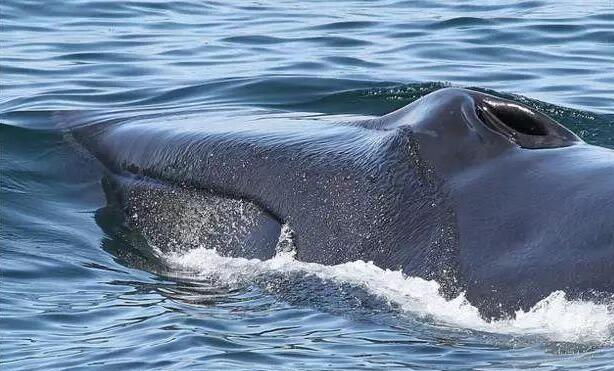Why cetaceans have the habit of weeping eyes
The eyes are the visual organs of animals. As marine animals are affected by the marine environment, the types of eyes are not only diverse, but also have special functions. When it comes to the peculiarities of the eyes of sea creatures, it really abounds. For the flounder, as people usually say, in order to adapt to life under the sea, move the eyes to the same side of the body, so that you can lie on the bottom of the sea, with both eyes facing up, looking for fish and shrimp for predation, expanding the field of vision.
The horseshoe crab has four eyes and two small eyes at the front of the head breastplate, which are most sensitive to ultraviolet light and are used to perceive brightness. On both sides of the horseshoe crab’s head and breastplate, there are a pair of large compound eyes, each of which is composed of several small eyes. The compound eyes of horseshoe crab can enhance the contrast of the image. This principle is applied to TV and radar systems to improve the imaging clarity of TV and the display sensitivity of radar.
Thus, the unknown horseshoe crab suddenly worth a hundred times. Although fish eyes are very different, ichthyologists have found that fish eyes have a common feature: they have no real eyelids and no lacrimal glands, so they never shed tears. Mammals and reptiles living in the sea, like cetaceans and sea turtles, are the opposite of fish. They all have the habit of “watering tears”.
In the eyes of whales, there is a gland that can secrete a kind of oily tears. These “tears” isolate the salty seawater, making them unlike the eyes of other mammals. Long-term immersion in seawater will cause pain. It is an adaptation of cetaceans living in the ocean for a long time. Sea turtles “shed tears” is also a kind of protection phenomenon. It is not the sadness that people imagine when they are slaughtered. Sea turtles eat seaweed and drink sea water in the sea. The fluid in the body and the salt in the blood accumulate a lot. It depends on tears. Exhaust salt from the body to maintain the balance of salt in the body and outside.
Whale’s biological “sonar”
Sonar is not a human patent, many animals have their own “sonar”. Bats use their larynx to transmit ultrasonic pulses 10-20 times per second and use their ears to receive their echoes. With this “active sonar”, it can detect very small insects and metal wire obstacles with a thickness of 0.1 mm. Insects such as moths also have “passive sonar”, which can clearly hear the ultrasound of bats at a distance of 40m away, so they can often avoid attacks. However, some bats can use high-frequency ultrasound or low-frequency ultrasound beyond the insect’s listening range, so that the hit rate of catching insects is still very high. It seems that animals are also engaged in “sonar warfare” like humans! Marine mammals such as dolphins and whales possess “underwater sonar”, which can generate a very certain signal to search for food and communicate with each other.
Many species of cetaceans use sound to detect and communicate. They use frequencies much lower than those of dolphins and have a much longer range. Other marine mammals, such as seals and sea lions, also emit sonar signals for detection.
The sensitivity of dolphin sonar is very high. It can detect a wire with a diameter of 0.2mm and a nylon rope with a diameter of 1mm a few meters away. It can distinguish two signals with a difference of 200ps time. It can detect a school of fish hundreds of meters away and can cover the eyes. Move flexibly and quickly in a pool filled with bamboo poles without touching the bamboo poles; the dolphin sonar has a strong “target recognition” ability, not only can identify different fish, but also distinguish between brass, aluminum, bakelite, plastic, etc. Different material materials can distinguish between the echoes of their own sound and the sound waves that people record and replay; the anti-interference ability of dolphin sonar is also amazing. If there is noise interference, it will increase the intensity of the call. To avoid noise, so that their own judgment is not affected; moreover, dolphin sonar also has the ability to express emotion, it has been proved that dolphins are a kind of animal with “language”, and their “talk” is through its sonar system. Their sonar systems have a clear “division of labor”, some are used for positioning, some are used for communication, some are used for alarms, and they have the special function of modulating the phase through frequency modulation.
Animals that live in the deep ocean in the extreme darkness have to use sonar and other means to search for prey and avoid attacks. The performance of their sonar is far beyond the reach of modern human technology. Solving the mystery of these animal sonars has always been an important research topic in modern sonar technology. The “sonar” that we humans invented was invented through the principles of whales and dolphins.






